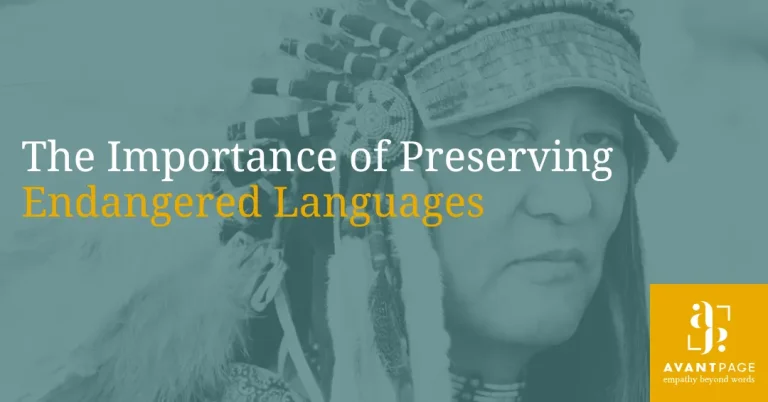Ensuring Language Justice in Elections: The Legal Requirements for Translation
For a democracy to be truly representative, its citizens must have equal access to vote in their elections. This is one of the guiding principles behind the Voting Rights Act of 1965, which prohibits racial discrimination in elections across the United States. Since its adoption in 1965, this key piece of legislation has been expanded to protect the voting rights of other minority groups as well, including the nearly 25.7 million Americans with limited English proficiency (LEP).
In particular, Section 203 of the Voting Rights Act outlines key measures to ensure language justice in elections—that is, it empowers eligible voters with limited English proficiency to exercise their civic duty by setting requirements for translating election materials. Multilingual election ballots have since become a mainstay of American elections, as they allow individuals LEP to fully understand what’s at stake in each election, whether it’s a small municipal election or a hotly contested presidential election.
In this blog post, we’ll take a look at the legal framework for language justice in elections, sharing proactive, actionable strategies that election offices can use to ensure that LEP voters in their jurisdiction can exercise their right to vote just as easily as a native English speaker might.
The Legal Foundations for Election Translation
As discussed earlier, the Voting Rights Act lays out government-related translation regulations that ensure individuals with LEP have equal opportunity to participate in elections. Section 203 of the Voting Rights Act states that jurisdictions with significant populations of language minority citizens must provide them with information in their preferred language.
While Section 203 only covers languages spoken by “persons who are American Indian, Asian American, Alaskan Natives or of Spanish heritage,” it’s good practice to go beyond the bare minimum—while it may not be required to translate election materials into Arabic or Haitian Creole, it helps make elections more fair and accessible, especially in jurisdictions where these languages are widely spoken.
That is, anything that’s available in English must also be made available in the language spoken among the LEP population. Additionally, election boards must staff the polls with workers who can provide LEP voters with assistance in their preferred language.
More specifically, the act covers any locality where more than 10,000 people or 5% of the total voting age citizen population meet the following conditions:
- Are members of a single language minority group
- Have depressed literacy rates
- Do not speak English very well
In 2021, a total of 331 jurisdictions met those criteria and had to provide language assistance to voters with LEP. And that number’s on the rise: just five years prior, only 263 jurisdictions had to do so. To ensure language justice in elections, any jurisdiction that meets these criteria must translate the following materials:
- Ballots
- Voter registration forms
- Poll worker training materials
- Sample ballots and voting instructions
- Election websites and online tools
- Outreach and education materials
They must also have a multilingual team of poll workers who can offer assistance to LEP voters.
And the Voting Rights Act isn’t the only piece of legislation that aims to improve accessibility and language justice in elections. The National Voter Registration Act (known colloquially as the “Motor Voter” law) requires states to offer voter registration opportunities at state motor vehicle agencies. If a given jurisdiction is covered by the language minority provisions of the Voting Rights Act, these registration forms must be translated and available in any relevant minority languages.
Likewise, Title VI of the Civil Rights Act prevents discrimination on the grounds of national origin, a category which includes an individual’s linguistic background. There are also several local and state regulations that election boards must be aware of as well.
Compliance Pitfalls and Enforcement
Even with clear legal requirements in place, compliance with election translation laws can be uneven, and in some cases, neglected entirely. When jurisdictions fail to meet their obligations under Section 203 or other language access laws, they not only risk legal consequences but also erode trust among voters who already face barriers to participation.
Many complaints have been raised against jurisdictions that do not comply with the requirements of Section 203 of the Voting Rights Act. For example, a 2024 complaint was filed against Pawtucket County, which allegedly did not sufficiently translate election-related materials into Spanish, despite being required to do so under Section 203.
Noncompliance can result in costly and time-consuming legal challenges, but more importantly, a lack of language justice in elections is likely to result in elections that are not fully representative of your population. Ultimately, compliance isn’t just about avoiding lawsuits—it’s about delivering on the promise of fair and inclusive democracy for all. If voters have difficulty understanding the voting process or what they’re voting on, they’re likely to skip voting entirely.
By translating election materials into languages spoken widely throughout your community, you can help LEP citizens build trust in the voting process and ensure more representative elections.
How to Implement Language Justice in Elections
Here are some strategies to go above and beyond the federal requirements for language access, so your organization can take a proactive approach to language justice in elections:
Partner with community-based organizations (CBOs)
CBOs that work closely with immigrant populations can help you identify weak areas in your language access measures and develop strategies for improvement.
Conduct regular language needs assessments
The federal government releases a list of areas and languages covered under Section 203 every five years, but it’s important to be proactive. Look into census data and other local demographic information to see if there are any languages not covered under Section 203 that could be worth translating election materials into, even if you don’t technically have to.
Hire bilingual staff and poll workers
While this is required under Section 203, it’s important to strategically place bilingual poll workers at the polls. If one poll is located in an area with very few Spanish speakers, it may be a better idea to have Spanish-speaking workers posted at a poll where they’re more likely to come in contact with Spanish-speaking voters.
Work with a trusted language service provider
Language service providers can help you assess your translation, interpretation, and localization needs. Don’t try to undertake the task of translation all on your own—a language service provider will connect you with professional translators and editors to ensure top-notch quality.
Beyond Compliance: Building Equitable Access for the Future
True language justice in elections means meeting voters where they are, both linguistically and culturally. This means translating materials with cultural competence and ensuring that assistance is accessible to voters who speak non-written languages or regional dialects. Partnering with trusted community organizations can amplify outreach and build trust where it’s needed most.
Looking ahead, election officials are increasingly turning to digital tools, such as multilingual voter portals and mobile-friendly ballot guides. While AI-powered translation tools offer promising efficiencies, they also carry risks, such as producing inaccurate translations that could confuse or mislead voters. As the electorate becomes more linguistically diverse, calls to modernize the Voting Rights Act’s language coverage formulas and establish stronger federal standards for translation and accessibility are growing louder.
Frequently Asked Questions About Language Justice in Elections
What does “language justice in elections” mean?
Language justice in elections means going above and beyond the basic language access requirements of elections and working to ensure that voting-age citizens can participate in elections seamlessly, without having to worry that their LEP will impact their ability to understand the voting process.
What law requires election material translation in the U.S.?
The Voting Rights Act requires election boards to translate election materials into a variety of different languages. Specifically, Section 203 outlines the requirements for translating election materials into languages other than English.
How do jurisdictions know if they must comply with Section 203?
If a jurisdiction has more than 10,000 people or 5% of its population who are voting-age citizens that are members of a single language minority group, have depressed literacy rates, and do not speak English well, they must comply with Section 203.
The most recent list of jurisdictions that must comply with Section 203 can be found here.
Are election websites and voter tools also required to be translated?
Yes. Any election-related materials that are available in English must also be translated into the language spoken by the covered language minority group. Learn about the election materials that need to be translated.
What happens if an election office fails to meet translation requirements?
Failure to comply with Section 203 of the Voting Rights Act can result in expensive and time-consuming legal challenges. Additionally, it may harm a jurisdiction’s reputation, further discouraging LEP voters from participating in future elections.
Can machine translation tools be used to comply with the law?
Machine translation alone should not be used to translate election materials; at the very least, human translators should review machine translation for potential errors. Machine translation tools often struggle with context and nuance, so it’s important to have a human who’s familiar with English and the target language to review and edit translations and ensure accuracy.
What languages are most commonly covered under the Voting Rights Act?
According to the 2021 list of jurisdictions covered under Section 203, Spanish is by far the most commonly covered language under the Voting Rights Act. It’s followed by Chinese, Vietnamese, Filipino, and several other Asian and Native American languages.
How can small election offices afford multilingual services?
Many election materials have already been translated for you—look to the Election Assistance Commission and your Secretary of State’s office to find them. Additionally, language service providers often provide a wide range of services, from the standard human translation to more cost-effective methods like machine translation post-editing. Consult with multiple different language service providers to determine the option that works best for your office.
Conclusion
To ensure elections are fair and accessible to all, election offices should go beyond the bare minimum requirements outlined in Section 203 of the Voting Rights Act. Conducting thorough assessments of your jurisdiction’s language needs is the best way to ensure that citizens from all linguistic backgrounds can participate fully in our democracy.
Though the 2024 elections are now in the rearview mirror, it’s never too soon to look into ways to make upcoming elections more accessible. As our country becomes more linguistically diverse and the population of LEP citizens grows, language equity is becoming a core principle of our democracy.
If you’re looking to promote language justice in elections, consider reaching out to Avantpage. We specialize in translations for election offices across the country, empowering LEP voters to fulfill their civic duty. Fill out this form to get a free quote for election material translation services or contact us at (530) 750-2040 or [email protected].


